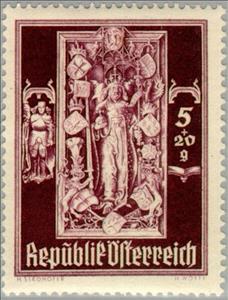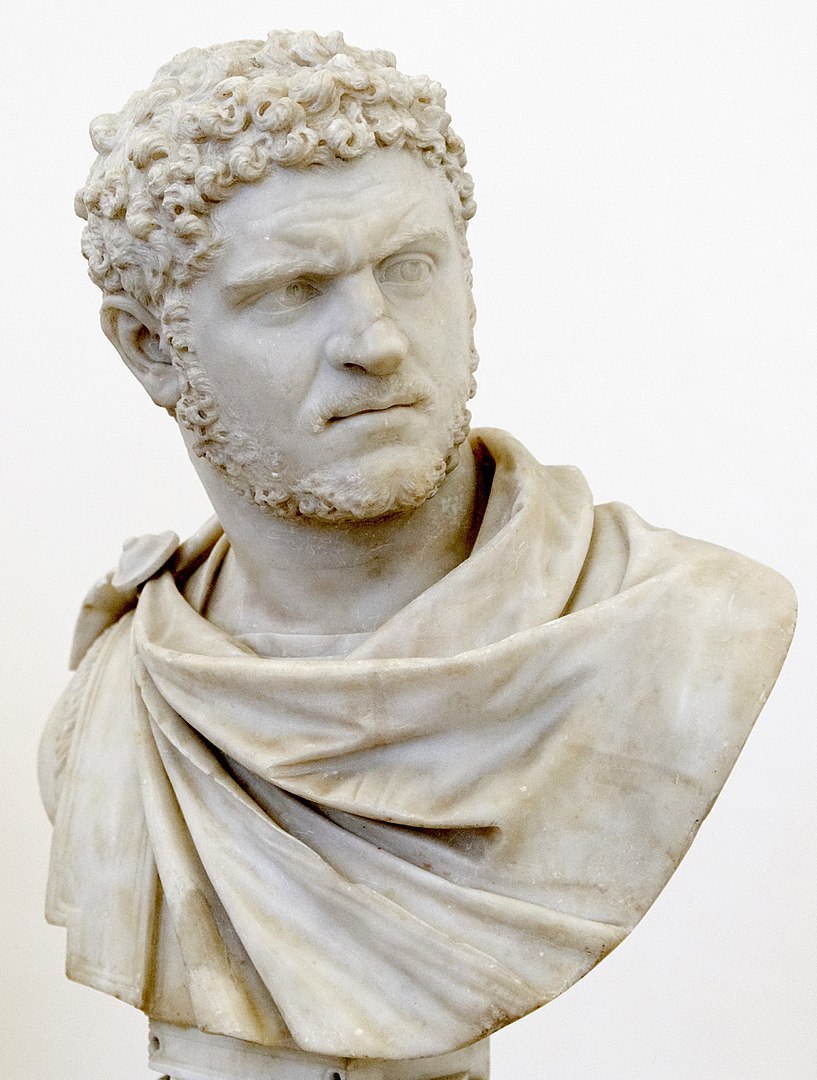Stamp: Tomb of Emperor Friedrich III (1415-93) (Austria 1946)
Tomb of Emperor Friedrich III (1415-93) (Austria 1946)
12 December (Austria ) within release Rebuilding Stephan's Cathedral, Vienna goes into circulation Stamp Tomb of Emperor Friedrich III (1415-93) face value 5+20 Austrian groschen
| Stamp Tomb of Emperor Friedrich III (1415-93) in catalogues | |
|---|---|
| Michel: | Mi:AT 792 |
| Stamp Number: | Sn:AT B190 |
| Yvert et Tellier: | Yt:AT 654 |
Stamp is vertical format.
Also in the issue Rebuilding Stephan's Cathedral, Vienna:
- Stamp - Duke Rudolf IV (1339-65) founder of the cathedral face value 3+12;
- Stamp - Tomb of Emperor Friedrich III (1415-93) face value 5+20;
- Stamp - Pulpit of Anton Pilgram (16th Cty.) face value 6+24;
- Stamp - St. Stephan (giant gate), 15th Cty. face value 8+32;
- Stamp - Servant's Madonna, Barbara Chapel in the cathedral face value 10+40;
- Stamp - Baroque high altar before destruction in 1945 face value 12+48;
- Stamp - Baroque organ in the West Gallery (destroyed 1945) face value 30+120;
- Stamp - Master Anton Pilgram (16th Cty.) self portrait face value 50+180;
- Stamp - North Tower of the cathedral face value 1+5;
- Stamp - South Tower of the cathedral face value 2+10;
Stamp Tomb of Emperor Friedrich III (1415-93) it reflects the thematic directions:
Sculpture is the branch of the visual arts that operates in three dimensions. Sculpture is the three-dimensional art work which is physically presented in the dimensions of height, width and depth. It is one of the plastic arts. Durable sculptural processes originally used carving (the removal of material) and modelling (the addition of material, as clay), in stone, metal, ceramics, wood and other materials but, since Modernism, there has been almost complete freedom of materials and process. A wide variety of materials may be worked by removal such as carving, assembled by welding or modelling, or moulded or cast.
A monument is a type of structure that was explicitly created to commemorate a person or event, or which has become relevant to a social group as a part of their remembrance of historic times or cultural heritage, due to its artistic, historical, political, technical or architectural importance. Examples of monuments include statues, (war) memorials, historical buildings, archaeological sites, and cultural assets. If there is a public interest in its preservation, a monument can for example be listed as a UNESCO World Heritage Site. The Palgrave Encyclopedia of Cultural Heritage and Conflict gives the next definition of monument:
A statue is a free-standing sculpture in which the realistic, full-length figures of persons or animals are carved or cast in a durable material such as wood, metal or stone. Typical statues are life-sized or close to life-size. A sculpture that represents persons or animals in full figure, but that is small enough to lift and carry is a statuette or figurine, whilst those that are more than twice life-size are regarded as colossal statues.
The word emperor (from Latin: imperator, via Old French: empereor) can mean the male ruler of an empire. Empress, the female equivalent, may indicate an emperor's wife (empress consort), mother/grandmother (empress dowager/grand empress dowager), or a woman who rules in her own right and name (empress regnant or suo jure). Emperors are generally recognized to be of the highest monarchic honour and rank, surpassing king. In Europe, the title of Emperor has been used since the Middle Ages, considered in those times equal or almost equal in dignity to that of Pope due to the latter's position as visible head of the Church and spiritual leader of the Catholic part of Western Europe. The emperor of Japan is the only currently reigning monarch whose title is translated into English as "Emperor"
A church building, often simply called a church, is a building used for Christian religious activities, particularly worship services. The term in its architectural sense is most often used by Christians to refer to their religious buildings, but it is sometimes used (by analogy) for buildings of other religions. In traditional Christian architecture, the church is often arranged in the shape of a Christian cross. When viewed from plan view the longest part of a cross is represented by the aisle and the junction of the cross is located at the altar area. Towers or domes are often added with the intention of directing the eye of the viewer towards the heavens and inspiring church visitors. Modern church buildings have a variety of architectural styles and layouts; many buildings that were designed for other purposes have now been converted for church use; and, similarly, many original church buildings have been put to other uses. The earliest identified Christian church was a house church founded between 233 and 256. During the 11th through 14th centuries, a wave of building of cathedrals and smaller parish churches occurred across Western Europe. A cathedral is a church, usually Roman Catholic, Anglican, Oriental Orthodox or Eastern Orthodox, housing the seat of a bishop.




